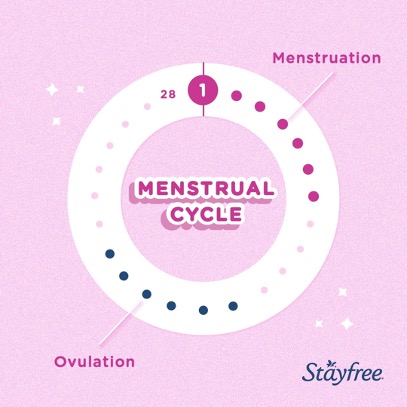How To Best Keep Track Of Your Menstrual Cycle
The average menstrual cycle lasts about twenty-eight days, with the first day you start your period being day one. Because your cycle can tell you a lot about what’s going on with you and your body, it’s important to keep track of it.² For example, irregular or missed periods could suggest pregnancy.³ In other cases, it could signal warnings that you’re very stressed, have a hormonal imbalance or other health issues. On the opposite end, extremely heavy periods exceeding seven days might also indicate that something could be wrong.
No matter which method you use to keep track of your cycles, make sure you include information like flow, colour, odour, texture and whatever else you can, especially if you start to notice any major menstrual cycle changes.²
menstual-cycle.jpeg

A wall or desk calendar
A wall or desk calendar is useful when you have a relatively normal period, or you don’t have a lot of need, motivation or time to write an entire description for each day.
Furthermore, a physical calendar can be a great reminder to track your period, as it can be placed somewhere you’ll see it often, like on your desk, wall or fridge.
If you prefer to be more private about things, you could try keeping a pocket calendar through an app on your phone or make sure you buy one with a cover to open and close it.
A journal
Those who prefer to keep things “by the book” might find journaling more up their alley. Not only will you be able to record the length and due date of your period, but you’ll also have plenty of space to write down all of the extra details.²
These might also be a better option if you are someone who is quite private and doesn’t want anyone seeing those intimate details.
It’s also a better option than a calendar if you are tracking your cycle for more specific reasons, like when trying to fall pregnant, or better understanding a related health condition.
A digital calendar
For those more in tune with technology, digital calendars can offer an array of benefits.¹ Not only can you use them like you would a traditional calendar but you can also add important details. Unlike traditional calendars, you can add these to your everyday devices, like your cell-phone or tablet. This ensures you always have your cycle details on hand. This method is most useful for noting significant changes or details, avoiding the potential of forgetting them later on.
A tracking app
A tracking app can also be an option for you if portability and convenience are important to you. Much like using a digital calendar, you can add these to your devices and carry them with you wherever you go. Unlike digital calendars, period tracking apps will be designed specifically to help you keep tabs on your cycle. They can also provide you with more details, as well as guide you on which things are most noteworthy. These apps might also be able to help you identify when you should see a doctor or be used to give them an in-depth account of what’s going on surrounding your menstrual health. A few examples of apps include Flo, Clue and Ovia.³
Ultimately, the method you choose really depends on your situation and the reason you are tracking it in the first place. Although it’s healthy for every woman to keep notes of their cycle, some may benefit from it more than others. Furthermore, combining more than one method of tracking your cycle will ensure you don’t encounter any issues down the line, like misplaced or lost information.
Sources:
- [1] https://www.obgyniowacity.com/blog/our-favorite-period-tracking-methods
- [2] https://www.verywellhealth.com/your-menstrual-cycle-calendar-2721972
- [3] https://www.everydayhealth.com/womens-health/tracking-your-menstrual-cycle.aspx
- [4] https://www.allaboutwomenmd.com/knowledge-center/tracking-your-period.html
